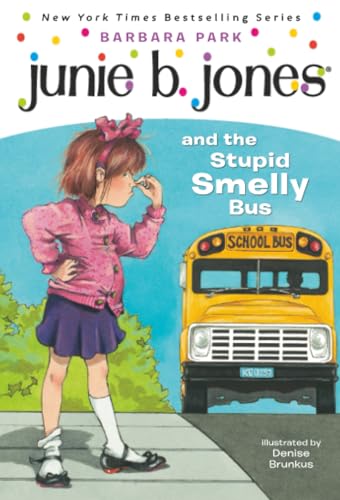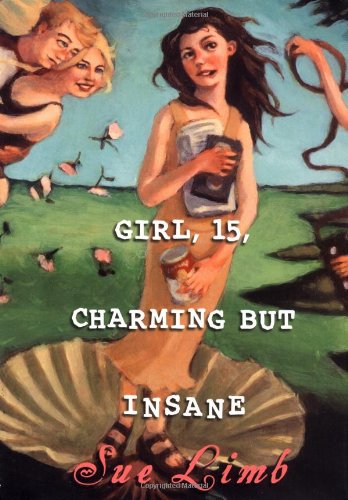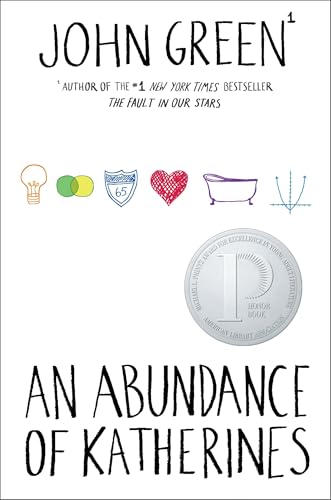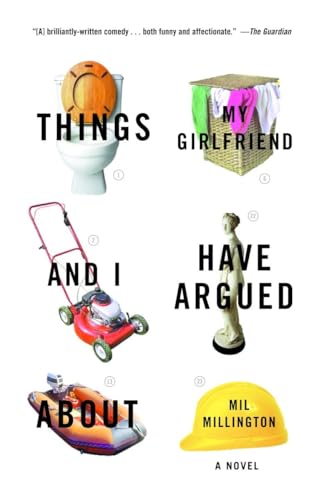It’s a dreary, rainy Monday in Virginia and seems like the perfect day for a carnival. Well, a Carnival of Children’s Literature in any case. I’m heading on over to take a look and I suggest you do the same.
I remembered and forgot to submit an entry about four times last week. I would be stuck on what to put into the carnival, get distracted, and forget. Until I remembered again. But the last time I remembered it was Too Late. Let that be a lesson to you. I’m still not sure what I would have submitted. The Weird-Ass Picture Book Awards was my most important — and I write that with some irony — post of March. But I get enough strange searches from my choice of award names and wouldn’t want to foist that burden on someone else. Let’s say it would have been a review of a new Mother Goose book, since I posted it on Good Friday as my readers left for the weekend.
I’m late on this report — like that’s a surprise — but I have to comment on the Children’s Choice Book Awards, mainly because I’m mystified by them. There are only a handful of the titles that I would have put on that list. There are several that I don’t know, but seem to have pretty limited appeal. I mean, Tucker’s Spooky Halloween? I don’t understand why there aren’t any novels in the fifth/sixth grade list, but two picture books. (I’m not knocking picture books for older kids, but that’s for another entry.) Probably the strangest thing is how none of the favorite authors or illustrators have books in any of the age categories. And it’s not just me — Fuse#8 and Roger are also puzzled by this award. The official word is that nominees were compiled from reviews of bestseller lists. I’m thinking that the nominees were selected by covering a wall with the ISBN numbers of recently published titles and playing a rousing game of Pin the Award on the Children’s Book.
Posted by
MotherReader
at
8:59 AM
I’m more than ready for springtime. Like, now. Warm weather, gentle breezes, and long days recharge my batteries. It’s been a mild winter here, so I have no right to complain, oh but complain I will. Because I Need Spring.
I’ve been encouraged by the progress in my garden, in which all sorts of flowers have been popping up. Other than the pansies that made it through the winter, I didn’t plant any of these flowers. They just sort of show up each year. I have a Darwinian approach to my garden. Survival of the fittest.
It’s always the crocuses that surprise me. I’ll be minding my own business, cursing the stupid cold days, when they start making their appearance. Suddenly there’s hope that spring is around the corner. God Bless the crocuses. My love for these simple plants led to my Poetry Friday selection. This little gem is from the charming collection Tap Dancing on the Roof: Sijo (Poems), by Linda Sue Park. Sijo is a traditional Korean form of poetry written using a syllabic structure. Written in English, the sijo in this book have fourteen to sixteen syllables divided evenly into either three or six lines. The last line of the these poems contains some twist, “humor or irony, an unexpected image, a pun, or a play on words.” In the beginning of the book, Park offers an explanation for the poetry style, and in notes at the end offers ways to turn the poetry reader into the poet. Her poems are delightful, focusing on the everyday world of the child. Throughout the book the spare, simple illustrations of Istvan Banyai complement the work perfectly.
This little gem is from the charming collection Tap Dancing on the Roof: Sijo (Poems), by Linda Sue Park. Sijo is a traditional Korean form of poetry written using a syllabic structure. Written in English, the sijo in this book have fourteen to sixteen syllables divided evenly into either three or six lines. The last line of the these poems contains some twist, “humor or irony, an unexpected image, a pun, or a play on words.” In the beginning of the book, Park offers an explanation for the poetry style, and in notes at the end offers ways to turn the poetry reader into the poet. Her poems are delightful, focusing on the everyday world of the child. Throughout the book the spare, simple illustrations of Istvan Banyai complement the work perfectly.
If I may be allowed to share one more (okay, Linda?), I’d like everyone to know about this tribute to poetry.
Poetry Friday roundup is over at Cuentesitos.
I’ve been encouraged by the progress in my garden, in which all sorts of flowers have been popping up. Other than the pansies that made it through the winter, I didn’t plant any of these flowers. They just sort of show up each year. I have a Darwinian approach to my garden. Survival of the fittest.
It’s always the crocuses that surprise me. I’ll be minding my own business, cursing the stupid cold days, when they start making their appearance. Suddenly there’s hope that spring is around the corner. God Bless the crocuses. My love for these simple plants led to my Poetry Friday selection.
Crocuses
They pierce the thin skin of snow
with narrow swords of green
to clear the way for colors —
purple, yellow, lavender,
petals huddled close, guarding
the treasure: a lode of gold dust
 This little gem is from the charming collection Tap Dancing on the Roof: Sijo (Poems), by Linda Sue Park. Sijo is a traditional Korean form of poetry written using a syllabic structure. Written in English, the sijo in this book have fourteen to sixteen syllables divided evenly into either three or six lines. The last line of the these poems contains some twist, “humor or irony, an unexpected image, a pun, or a play on words.” In the beginning of the book, Park offers an explanation for the poetry style, and in notes at the end offers ways to turn the poetry reader into the poet. Her poems are delightful, focusing on the everyday world of the child. Throughout the book the spare, simple illustrations of Istvan Banyai complement the work perfectly.
This little gem is from the charming collection Tap Dancing on the Roof: Sijo (Poems), by Linda Sue Park. Sijo is a traditional Korean form of poetry written using a syllabic structure. Written in English, the sijo in this book have fourteen to sixteen syllables divided evenly into either three or six lines. The last line of the these poems contains some twist, “humor or irony, an unexpected image, a pun, or a play on words.” In the beginning of the book, Park offers an explanation for the poetry style, and in notes at the end offers ways to turn the poetry reader into the poet. Her poems are delightful, focusing on the everyday world of the child. Throughout the book the spare, simple illustrations of Istvan Banyai complement the work perfectly.If I may be allowed to share one more (okay, Linda?), I’d like everyone to know about this tribute to poetry.
WishCan we make that the official poem of Poetry Friday? Maybe the poetic mission statement? I don’t know, but I think it says so much in so few words. Love it.
For someone to read a poem
again, and again, and then,
having lifted it from page
to brain — the easy part —
cradle it on the longer trek
from brain all the way to heart.
Poetry Friday roundup is over at Cuentesitos.
Posted by
MotherReader
at
9:09 AM
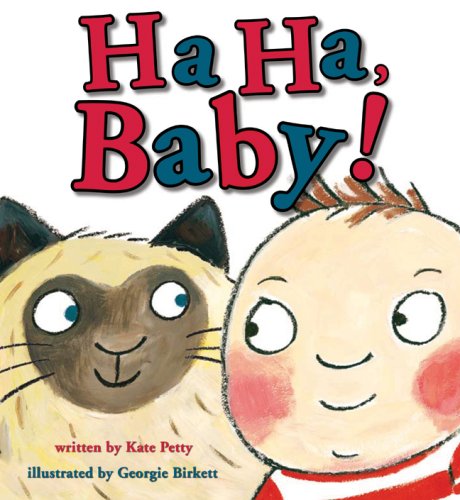 Ha Ha, Baby! by Kate Petty, illustrated by Georgie Birkett
Ha Ha, Baby! by Kate Petty, illustrated by Georgie Birkett“Today, our baby is not laughing. Not a hint of a dimple or a glimmer of a smile, but a face like thunder!” Though everyone in the family tries to get the baby to smile with tickling and peek-a-boo, bubbles and tricks, the baby won’t smile. Even the dachshund on the unicycle doesn’t work, and we all know how funny wiener dogs are. But when the older brother challenges baby to a staring contest with absolutely no laughing, the baby smiles, chuckles, and laughs. The pictures are have a gentle cartoon quality with soft lines and bright colors. There’s only one thing that I don’t get: What’s with all the costumes on the characters? I mean, the grandma is a fairy princess, the grandpa is a pirate, and there’s no explanation. Though I have to admit the outfits do make the book a little more fun. Great storybook for the preschool set.
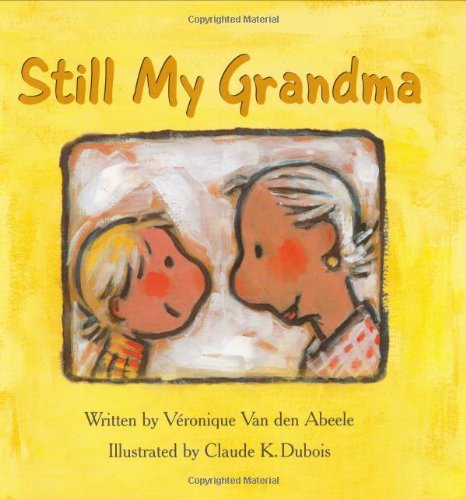 Still My Grandma, by Véronique Van den Abeele, illustrated by Claude K. Dubois
Still My Grandma, by Véronique Van den Abeele, illustrated by Claude K. DuboisCamille and her grandma have a wonderful friendship. They bake and shop and laugh together. But one day Camille’s grandmother seems confused, and she doesn’t get better. In fact she has Alzheimer’s disease and has to live in a house with other older people. Camille and her family visit, and Camille finds new ways to keep up their traditions. She brings her own treasures to Grandma and takes her for walks in her wheelchair. She says, “It’s true that she’s not the same person she used to be, but she’s still my Grandma and I love her very much. She loves me too.” While it would be helpful for kids going through similar experiences, it could also be read to show how people can change and we can still hold onto our love for them. Sweet book with soft, gentle illustrations.
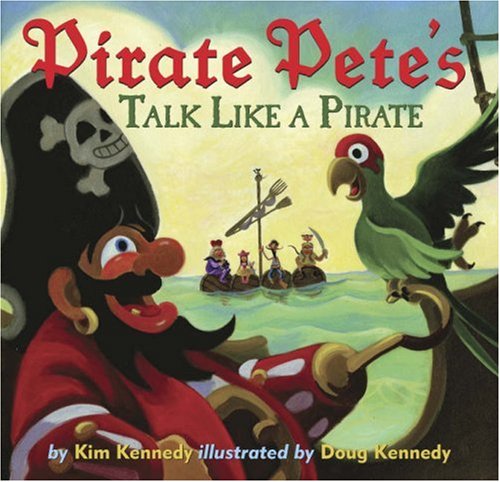 Pirate Pete’s Talk Like a Pirate, by Kim Kennedy, illustrated by Doug Kennedy
Pirate Pete’s Talk Like a Pirate, by Kim Kennedy, illustrated by Doug KennedyOkay, after that last book we need a funny one and this is it. Pirate Pete has a great ship, but he needs a crew. He goes to Rascal Island to find the right people for his ship. As each person is tested on his or her experience, they all seem to fail the most important test. None of them can talk like a pirate and so they have to walk the plank. It’s great fun to see their words turned into pirate talk. When one likely contender says that he is extremely courageous, the pirate captain corrects him:
“Ye should’ve said,Apparently, along with their salty phrasing, pirates also like to rhyme. I liked the illustrations, which were softer than I’ve been used to with the Melissa Long books where you see every blackened tooth. They are done as... I’m going to say oil paintings with a question mark, but you get the idea of the style. This book is lots of fun for the older preschoolers up to first, even second grade. (At this point, it’s also an Amazon Bargain Book. Order now!)
I’ve not a yellow bellied bone
From me head to me toes.
I’ll stand brave upon this ship wherever she goes!”
Posted by
MotherReader
at
9:33 AM
 I haven’t read The Big One-Oh, by Dean Pitchford, but I think it’s interesting that the blurbs are by Jamie Lee Curtis and John Lithgow. Dean Pitchford is himself a celebrity as a songwriter, though I would have totally cut him BACA slack because there’s no big name-recognition factor. However, now that the book’s been blurbed by two celebrities on the front cover, I feel that as the founder of Bloggers Against Celebrity Authors, I must pass on this book on principle.
I haven’t read The Big One-Oh, by Dean Pitchford, but I think it’s interesting that the blurbs are by Jamie Lee Curtis and John Lithgow. Dean Pitchford is himself a celebrity as a songwriter, though I would have totally cut him BACA slack because there’s no big name-recognition factor. However, now that the book’s been blurbed by two celebrities on the front cover, I feel that as the founder of Bloggers Against Celebrity Authors, I must pass on this book on principle. (Total confession: It actually sounds kinda funny. I might have to read it on the down-low.)
Posted by
MotherReader
at
9:20 AM
Today I’m participating in Nonfiction Monday (Yo! Suen!) with an adult book. (Yes, Roger. I do read adult books. Double score!)
 Look Me in the Eye: My Life with Asperger’s was written by John Elder Robinson, brother of Augusten Burroughs, author of Running With Scissors, which devoted a chapter to the misdiagnosed sibling. Got it? Now we hear John’s story.
Look Me in the Eye: My Life with Asperger’s was written by John Elder Robinson, brother of Augusten Burroughs, author of Running With Scissors, which devoted a chapter to the misdiagnosed sibling. Got it? Now we hear John’s story.
The chapters about John’s early years were of most interest to me. I felt like I was getting a view inside the head of someone who is trying so hard to communicate and not getting it right. He writes that contrary to common belief, a child with Asperger’s has emotions but can’t express them in the “appropriate” way. He describes how he had to learn logically the correct response to “Look at my Tonka truck!” where other kids knew what to say based on social cues and context. He explains that his natural remarks could seem random because he was following his own train of thought before his response. While adults were more tolerant of his random remarks, he shared how in ways it hurt him because he didn’t learn the correct way to relate to other people.
As a teenager, John found an interest in electronics and sound, and through a series of contacts he became the sound engineer and guitar designer for KISS. He describes his tours with the band — his own behavior was fairly tame, unlike that of the band — and his return to his home life. The ending chapters about his corporate work and later his own company didn’t hold my attention as well, but overall it was an interesting and insightful book.
 Look Me in the Eye: My Life with Asperger’s was written by John Elder Robinson, brother of Augusten Burroughs, author of Running With Scissors, which devoted a chapter to the misdiagnosed sibling. Got it? Now we hear John’s story.
Look Me in the Eye: My Life with Asperger’s was written by John Elder Robinson, brother of Augusten Burroughs, author of Running With Scissors, which devoted a chapter to the misdiagnosed sibling. Got it? Now we hear John’s story.The chapters about John’s early years were of most interest to me. I felt like I was getting a view inside the head of someone who is trying so hard to communicate and not getting it right. He writes that contrary to common belief, a child with Asperger’s has emotions but can’t express them in the “appropriate” way. He describes how he had to learn logically the correct response to “Look at my Tonka truck!” where other kids knew what to say based on social cues and context. He explains that his natural remarks could seem random because he was following his own train of thought before his response. While adults were more tolerant of his random remarks, he shared how in ways it hurt him because he didn’t learn the correct way to relate to other people.
As a teenager, John found an interest in electronics and sound, and through a series of contacts he became the sound engineer and guitar designer for KISS. He describes his tours with the band — his own behavior was fairly tame, unlike that of the band — and his return to his home life. The ending chapters about his corporate work and later his own company didn’t hold my attention as well, but overall it was an interesting and insightful book.
Posted by
MotherReader
at
12:51 PM
Today’s Poetry is from Mother Goose. That counts, right? In any case, it’s the first day of spring and the rhyme is definitely appropriate. Which is more than I can say for the weather today, a not-so-balmy 48 degrees here in Virginia.  Actually, this rhyme is specifically from Mother Goose and Friends, as selected and illustrated by Ruth Sanderson. Now, I love Ruth Sanderson. I bid on her snowflake during the Robert’s Snow auction. I didn’t get it, but oh, I wanted it so much. Her illustrations are so detailed and lovely, and Mother Goose rhymes are the perfect fit for her artwork. My inner girly-girl was tickled pink with the use of fairies throughout this title — even when fairies weren’t required — like “Ring Around the Rosies” with dainty, beautiful fairy girls circling a small rose bush. Ahhh. These are some of the prettiest illustrations I have ever seen.
Actually, this rhyme is specifically from Mother Goose and Friends, as selected and illustrated by Ruth Sanderson. Now, I love Ruth Sanderson. I bid on her snowflake during the Robert’s Snow auction. I didn’t get it, but oh, I wanted it so much. Her illustrations are so detailed and lovely, and Mother Goose rhymes are the perfect fit for her artwork. My inner girly-girl was tickled pink with the use of fairies throughout this title — even when fairies weren’t required — like “Ring Around the Rosies” with dainty, beautiful fairy girls circling a small rose bush. Ahhh. These are some of the prettiest illustrations I have ever seen.
But. I was very disappointed that she didn’t choose to include more children of color in this book. There are a few — little Miss Muffet and the boy in “The Elf-Man” — but there could have been and should have been more. I know that there’s that old-fashioned, old England feel to the book that you don’t want to spoil, but still some shades of brown seemed sorely needed.
Today’s Poetry Friday round-up is over at Wild Rose Reader.
Pit, Pat, Well-A-Day
Pit, pat, well-a-day,
Little robin flew away.
Where can little robin be?
Gone into the cherry tree.
 Actually, this rhyme is specifically from Mother Goose and Friends, as selected and illustrated by Ruth Sanderson. Now, I love Ruth Sanderson. I bid on her snowflake during the Robert’s Snow auction. I didn’t get it, but oh, I wanted it so much. Her illustrations are so detailed and lovely, and Mother Goose rhymes are the perfect fit for her artwork. My inner girly-girl was tickled pink with the use of fairies throughout this title — even when fairies weren’t required — like “Ring Around the Rosies” with dainty, beautiful fairy girls circling a small rose bush. Ahhh. These are some of the prettiest illustrations I have ever seen.
Actually, this rhyme is specifically from Mother Goose and Friends, as selected and illustrated by Ruth Sanderson. Now, I love Ruth Sanderson. I bid on her snowflake during the Robert’s Snow auction. I didn’t get it, but oh, I wanted it so much. Her illustrations are so detailed and lovely, and Mother Goose rhymes are the perfect fit for her artwork. My inner girly-girl was tickled pink with the use of fairies throughout this title — even when fairies weren’t required — like “Ring Around the Rosies” with dainty, beautiful fairy girls circling a small rose bush. Ahhh. These are some of the prettiest illustrations I have ever seen.But. I was very disappointed that she didn’t choose to include more children of color in this book. There are a few — little Miss Muffet and the boy in “The Elf-Man” — but there could have been and should have been more. I know that there’s that old-fashioned, old England feel to the book that you don’t want to spoil, but still some shades of brown seemed sorely needed.
Today’s Poetry Friday round-up is over at Wild Rose Reader.
Posted by
MotherReader
at
10:31 AM
 Monkey and Me, by Emily Gravett
Monkey and Me, by Emily GravettIncredible illustrations, not much story. The whole book is Monkey and Me went to see some [insert animal here]. It is very cute that the sock monkey and the girl are acting like the animal right before they show it. And the pictures are extraordinary. Someone else mentioned, and I agree, that the last line breaks the rhythm of the book. But apparently only Americans are getting the book end with “Zzzzzz.” In the UK they get a different ending that fits better, but I suppose they thought we weren’t sophisticated enough to understand “went home to get some tea” here across the pond.
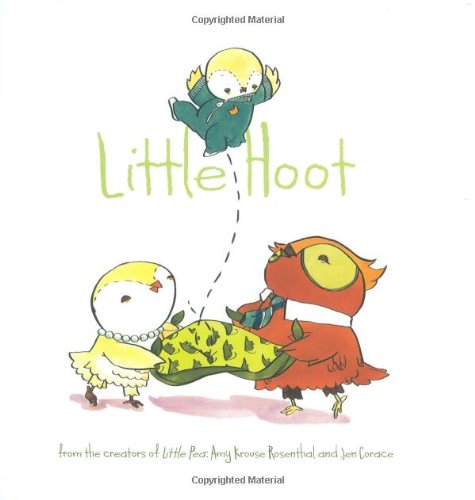 Little Hoot, by Amy Krouse Rosenthal and Jen Corace
Little Hoot, by Amy Krouse Rosenthal and Jen CoraceLittle Hoot likes school, and playing, and even practicing his staring. But he does not like Bedtime. Why? “Because when you’re an owl, you have to stay up late, late, late. That’s just the way it is.” While all of his other firends get to go to bed, he has to stay up and play. What torture! It’s a fun switch on the usual bedtime book. Nicely done book with the fun storyline and sweet, slight pictures.
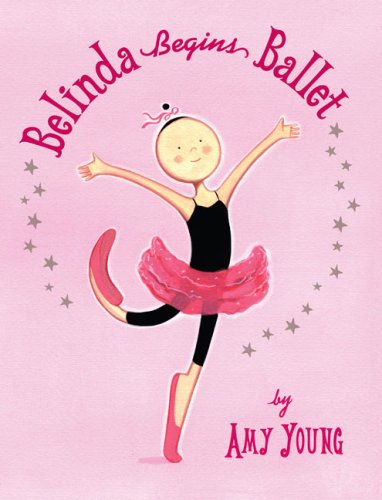 Belinda Begins Ballet, by Amy Young
Belinda Begins Ballet, by Amy YoungI’m a fan of the Belinda books, having a ballet student in my home. I would never have guessed that there would be a prequel. When Belinda was born, like all babies she had tiny everything — except her feet. Her big feet gave her lots of trouble, but the worst was when her teacher thought she should be a clown in the talent show just because she could wear the big clown shoes. Belinda was more interested in the ballerina who practiced before her, and so Belinda tried out the moves at home. I liked the book better on the first reading than on the second where I started to nitpick about: (a) Why was the teacher so mean? (b) How much time do they get to practice for this talent show anyway? and (c) How come Belinda learns the ballet moves in her room, alone, when my eight-year-old has been taking lessons for years and can’t do these moves? Still, young ballerinas will love the new Belinda book regardless of the flaws.
Posted by
MotherReader
at
1:09 PM
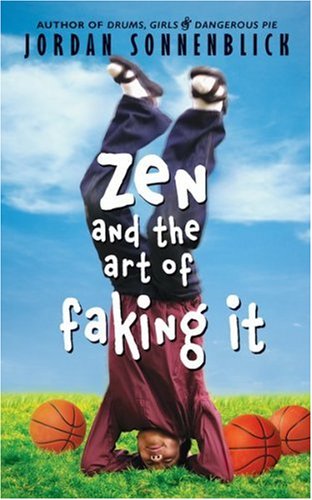
Maybe it was time to pretend something completely different. I didn’t actually hear the beat of a different drummer, but maybe I could pretend to be unique.Loved this book. My sixth-grade daughter loved this book. I’m sure my cats would have loved the book if I had taken the time to read it to them.
Be unique? It was so crazy it just might work. But what was unique about me? I was poor. I was Chinese. I was adopted. I had a screwed-up family. I feared bugs, especially spiders. None of those attributes necessarily jumped up and screamed, “LOOK! I’M A STAR!” I tried to come up with some amazing talent I might possess, but because of the whole change-interests-every-year thing, I only had a collection of semi-lame half-talents. And neither “You should see me almost play violin!” nor “Check out my stunning ability to juggle two objects” sounded like the slogan of a successful middle school maverick.— Zen and the Art of Faking It, by Jordan Sonnenblick
When San Lee moves to a new school, he always adjusts his personality to fit in. It’s something his dad taught him. This time his knowledge of Buddhism — having studied it at his last school — makes the students at Harrisonville Middle School think that he’s some sort of Zen master. It even makes him kinda, sorta popular. And he likes it. But eventually the truth has got to come out. Doesn’t it?
I loved the writing, which features great mental images and funny lines that kept me laughing all the way through the book. I loved that San’s an adopted child, but not conflicted about it. I loved that the book felt so fresh and real. Honestly, I could turn around and read the whole book again if I had the time.
But unfortunately, I don’t have the time. It’s spring break, I’m home, and I’ve got some serious — serious — cleaning to do. Apparently when your living room carpet is no longer clearly visible, you have to do something about it. And closing your eyes and wishing really hard doesn’t count.
Posted by
MotherReader
at
11:29 PM
 I’ve got to say it. Obama’s speech on race was extraordinary. It’s late, I’m tired, and I did not need to spend forty minutes listening to him. But I did, and... wow. Oh, and he wrote it himself. Double wow.
I’ve got to say it. Obama’s speech on race was extraordinary. It’s late, I’m tired, and I did not need to spend forty minutes listening to him. But I did, and... wow. Oh, and he wrote it himself. Double wow.If you haven’t seen the speech, you can find it here or along with the Washington Post article. I couldn’t resist pulling out this one part for my book-loving peeps:
And it means taking full responsibility for own lives — by demanding more from our fathers, and spending more time with our children, and reading to them, and teaching them that while they may face challenges and discrimination in their own lives, they must never succumb to despair or cynicism; they must always believe that they can write their own destiny.“And reading to them.” Yes.
Posted by
MotherReader
at
11:24 AM
I’m back, tired and a little bit poorer, because no, I did not win money. But I did come home with some valuable knowledge about myself, gambling, and Las Vegas.
I realized that I want to be rich, but only on vacation. Ninety-five percent of the time, I don’t particularly want to be wealthy. I don’t crave $500 shoes or $5,000 purses. I enjoy seeing big, well-decorated houses, but I don’t strive to live in one. Fancy cars, diamond jewelry, and designer clothes don’t do it for me. However, on vacation I would LOVE to be one of those people who don’t think about money. People who go to $100 shows every night and start their gambling stash with $1,000. I also wouldn’t mind being rich enough to take lots of vacations in the first place. Mercedes, Tiffany’s, and Prada? No. Milan, Tahiti, and Peru? Yes!
I finally understand gambling. I’ve played slot machines a couple of times, but I always had in mind what I was comfortable losing. So if I was out all night and lost thirty dollars, it didn’t matter. I knew I had gotten thirty dollars of entertainment plus the free drinks that they bring around, so I was fine with losing. I’d rather win, but I could afford to lose.
This trip I decided that I was going to play at the tables at least once. When my group went to the Bellagio one morning, the chance came to me. There was a blackjack table open with a friendly dealer and two nice women. I thought if I was going to lose money — and I fully expected to — I’d rather lose it in this classy, serene casino with pleasant people. The table had a ten-dollar minimum per bet. Oh boy. As I played, I realized that this was gambling. To get that rush, you have to put in more than you feel comfortable betting. I never understood that, because I never tried it. I suspect, too, that as you get used to that set amount — whatever it is for you — then you have to bet higher and higher to get the same charge. No wonder gambling is so addictive.
As for me, I played for about thirty minutes with nice people in a classy, serene casino. I was up by twenty dollars at one point, and down by fifty at another. In the end, I lost twenty dollars, but I left feeling good because it was such an interesting and exhilarating experience. Sometimes it’s worth it to leave your comfort zone for a little while.
Now, Las Vegas. Even though I was one of my group to suggest this vacation, I didn’t quite understand the attraction of Las Vegas. I do now. It’s a combination of a frat crawl and Disney World, but for adults. People walk through the streets carrying beers like it’s one big party. At ten in the morning! While bars in D.C. seem to be for the twenty-something crowd, in Las Vegas all ages seem welcome. Also like a frat party, people go out of their way to meet other people. (I got chatted up a bit, to the amusement of my friends.) Then there’s the Disney World element of replicas of fabulous places — but instead of Cinderella’s castle, it’s Parisian streets or Egyptian pyramids. Top it all off with a sense that your parents Wouldn’t Approve — a exciting/nervous feeling that you may not have had since high school — and there you have the winning combination that makes Las Vegas special.
Anyway, I had a great time and I’m looking forward to going back with Bill. Or hey, maybe for a Kidlitosphere conference?
I realized that I want to be rich, but only on vacation. Ninety-five percent of the time, I don’t particularly want to be wealthy. I don’t crave $500 shoes or $5,000 purses. I enjoy seeing big, well-decorated houses, but I don’t strive to live in one. Fancy cars, diamond jewelry, and designer clothes don’t do it for me. However, on vacation I would LOVE to be one of those people who don’t think about money. People who go to $100 shows every night and start their gambling stash with $1,000. I also wouldn’t mind being rich enough to take lots of vacations in the first place. Mercedes, Tiffany’s, and Prada? No. Milan, Tahiti, and Peru? Yes!
I finally understand gambling. I’ve played slot machines a couple of times, but I always had in mind what I was comfortable losing. So if I was out all night and lost thirty dollars, it didn’t matter. I knew I had gotten thirty dollars of entertainment plus the free drinks that they bring around, so I was fine with losing. I’d rather win, but I could afford to lose.
This trip I decided that I was going to play at the tables at least once. When my group went to the Bellagio one morning, the chance came to me. There was a blackjack table open with a friendly dealer and two nice women. I thought if I was going to lose money — and I fully expected to — I’d rather lose it in this classy, serene casino with pleasant people. The table had a ten-dollar minimum per bet. Oh boy. As I played, I realized that this was gambling. To get that rush, you have to put in more than you feel comfortable betting. I never understood that, because I never tried it. I suspect, too, that as you get used to that set amount — whatever it is for you — then you have to bet higher and higher to get the same charge. No wonder gambling is so addictive.
As for me, I played for about thirty minutes with nice people in a classy, serene casino. I was up by twenty dollars at one point, and down by fifty at another. In the end, I lost twenty dollars, but I left feeling good because it was such an interesting and exhilarating experience. Sometimes it’s worth it to leave your comfort zone for a little while.
Now, Las Vegas. Even though I was one of my group to suggest this vacation, I didn’t quite understand the attraction of Las Vegas. I do now. It’s a combination of a frat crawl and Disney World, but for adults. People walk through the streets carrying beers like it’s one big party. At ten in the morning! While bars in D.C. seem to be for the twenty-something crowd, in Las Vegas all ages seem welcome. Also like a frat party, people go out of their way to meet other people. (I got chatted up a bit, to the amusement of my friends.) Then there’s the Disney World element of replicas of fabulous places — but instead of Cinderella’s castle, it’s Parisian streets or Egyptian pyramids. Top it all off with a sense that your parents Wouldn’t Approve — a exciting/nervous feeling that you may not have had since high school — and there you have the winning combination that makes Las Vegas special.
Anyway, I had a great time and I’m looking forward to going back with Bill. Or hey, maybe for a Kidlitosphere conference?
Posted by
Bill
at
12:07 PM
Well, in recognition of MR’s Vegas trip, we thought it might be an opportune time to reprint this review (which originally ran almost two years ago) of Ben Mezrich’s books Bringing Down the House and its followup Busting Vegas. Especially in light of the former’s imminent movie adaptation. Enjoy, and rest assured that Pam will be back soon, though perhaps a few dollars lighter.
Hey, we can’t all be MIT whiz kids.
Win Money Playing Blackjack
That was what I was supposed to be doing. But our plans to go to Atlantic City for the beginning of spring break fell through. Instead I found myself on Monday sitting on the front porch, and then the back porch, and then the front porch again, reading about gambling. No, I correct myself. Not reading about gambling — reading about winning.
(Did you hear that? That was the sound of people leaving this site when they found out it was about books, not blackjack.)
Ben Mezrich’s two books, Busting Vegas: The MIT Whiz Kid Who Brought The Casinos To Their Knees and Bringing Down the House: The Inside Story of Six M.I.T. Students Who Took Vegas For Millions, are extraordinary. They are action-adventure books for geeks. They give the nerds their day in the sun. You know, in case übernerd Bill Gates ruling the world wasn’t enough for you.
 In Busting Vegas, the author tracks a M.I.T. kid who learns a new system for beating blackjack. It is almost cheating, but not quite. Using three techniques more sophisticated than card counting, he and his team make tons of money — in one case fifty thousand dollars in one hand. In ten minutes of play. Of course, you can’t make that kind of money without drawing some attention, and some of it isn’t the nice kind of attention. For with the comped suite and plane ticket and arena fight, there’s back-room intimidation, gunpoint confrontations, and one memorable plane crash. It wasn’t an easy life for a kid, but it sure was a profitable one, and now he is sharing his secrets with us.
In Busting Vegas, the author tracks a M.I.T. kid who learns a new system for beating blackjack. It is almost cheating, but not quite. Using three techniques more sophisticated than card counting, he and his team make tons of money — in one case fifty thousand dollars in one hand. In ten minutes of play. Of course, you can’t make that kind of money without drawing some attention, and some of it isn’t the nice kind of attention. For with the comped suite and plane ticket and arena fight, there’s back-room intimidation, gunpoint confrontations, and one memorable plane crash. It wasn’t an easy life for a kid, but it sure was a profitable one, and now he is sharing his secrets with us.
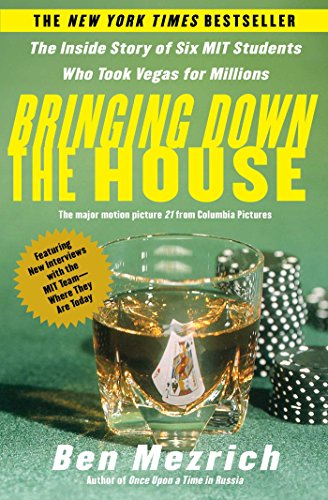 In Bringing Down the House, the author presents a group of M.I.T. students who find their way to money through card counting. But this isn’t your Rain Man kind of card counting; this is a simple high-low strategy the students are learning. But that strategy alone won’t pull in the kind of money they want, and it always attracts the attention of the casino managers — who don’t like card-counters. Instead, the students work in teams, with “Spotters” playing hands until the decks get “hot” with high cards, then the “Big Players” swoop in on a signal, and play hard and fast on the good run. Then they take off with the winnings and everyone splits it later. But again, with the freebies and money come danger and risk. And sometimes, even with the best odds in your favor, the cards don’t go your way.
In Bringing Down the House, the author presents a group of M.I.T. students who find their way to money through card counting. But this isn’t your Rain Man kind of card counting; this is a simple high-low strategy the students are learning. But that strategy alone won’t pull in the kind of money they want, and it always attracts the attention of the casino managers — who don’t like card-counters. Instead, the students work in teams, with “Spotters” playing hands until the decks get “hot” with high cards, then the “Big Players” swoop in on a signal, and play hard and fast on the good run. Then they take off with the winnings and everyone splits it later. But again, with the freebies and money come danger and risk. And sometimes, even with the best odds in your favor, the cards don’t go your way.
Both of these books were quick, incredible reads. Now if you’ll excuse me, I’m going to play a little blackjack.
Hey, we can’t all be MIT whiz kids.
Win Money Playing Blackjack
That was what I was supposed to be doing. But our plans to go to Atlantic City for the beginning of spring break fell through. Instead I found myself on Monday sitting on the front porch, and then the back porch, and then the front porch again, reading about gambling. No, I correct myself. Not reading about gambling — reading about winning.
(Did you hear that? That was the sound of people leaving this site when they found out it was about books, not blackjack.)
Ben Mezrich’s two books, Busting Vegas: The MIT Whiz Kid Who Brought The Casinos To Their Knees and Bringing Down the House: The Inside Story of Six M.I.T. Students Who Took Vegas For Millions, are extraordinary. They are action-adventure books for geeks. They give the nerds their day in the sun. You know, in case übernerd Bill Gates ruling the world wasn’t enough for you.
 In Busting Vegas, the author tracks a M.I.T. kid who learns a new system for beating blackjack. It is almost cheating, but not quite. Using three techniques more sophisticated than card counting, he and his team make tons of money — in one case fifty thousand dollars in one hand. In ten minutes of play. Of course, you can’t make that kind of money without drawing some attention, and some of it isn’t the nice kind of attention. For with the comped suite and plane ticket and arena fight, there’s back-room intimidation, gunpoint confrontations, and one memorable plane crash. It wasn’t an easy life for a kid, but it sure was a profitable one, and now he is sharing his secrets with us.
In Busting Vegas, the author tracks a M.I.T. kid who learns a new system for beating blackjack. It is almost cheating, but not quite. Using three techniques more sophisticated than card counting, he and his team make tons of money — in one case fifty thousand dollars in one hand. In ten minutes of play. Of course, you can’t make that kind of money without drawing some attention, and some of it isn’t the nice kind of attention. For with the comped suite and plane ticket and arena fight, there’s back-room intimidation, gunpoint confrontations, and one memorable plane crash. It wasn’t an easy life for a kid, but it sure was a profitable one, and now he is sharing his secrets with us. In Bringing Down the House, the author presents a group of M.I.T. students who find their way to money through card counting. But this isn’t your Rain Man kind of card counting; this is a simple high-low strategy the students are learning. But that strategy alone won’t pull in the kind of money they want, and it always attracts the attention of the casino managers — who don’t like card-counters. Instead, the students work in teams, with “Spotters” playing hands until the decks get “hot” with high cards, then the “Big Players” swoop in on a signal, and play hard and fast on the good run. Then they take off with the winnings and everyone splits it later. But again, with the freebies and money come danger and risk. And sometimes, even with the best odds in your favor, the cards don’t go your way.
In Bringing Down the House, the author presents a group of M.I.T. students who find their way to money through card counting. But this isn’t your Rain Man kind of card counting; this is a simple high-low strategy the students are learning. But that strategy alone won’t pull in the kind of money they want, and it always attracts the attention of the casino managers — who don’t like card-counters. Instead, the students work in teams, with “Spotters” playing hands until the decks get “hot” with high cards, then the “Big Players” swoop in on a signal, and play hard and fast on the good run. Then they take off with the winnings and everyone splits it later. But again, with the freebies and money come danger and risk. And sometimes, even with the best odds in your favor, the cards don’t go your way.Both of these books were quick, incredible reads. Now if you’ll excuse me, I’m going to play a little blackjack.
Posted by
MotherReader
at
12:14 AM
With all respects to the King, here’s my slightly altered, more poetic version of a classic song.
Poetry Friday round-up is hosted by Jama Rattigan.
Oh, bright light cityYes, I’m off to Vegas today. Nope, not bringing the kids. Nope, not the husband either. I’m going with my friends from college and we’re celebrating twenty years of friendship with one fabulous trip. There’s some gambling on the itinerary, which also includes finding an Elvis impersonator and seeing the largest gold nugget in existence. Maybe it’s really more of a scavenger hunt than an itinerary. In any case, wish me luck. With the gambling, not the gold nugget search.
Set my soul on fire.
Piles of money to burn
Raise the stakes higher.
Viva Las Vegas
With your neon flashing,
And your one-armed bandits
Crashing
All those hopes
down the drain.
Viva Las Vegas
Turning the day into nighttime,
Turn the night into daytime.
If you see it once,
you’ll never come home again.
Poetry Friday round-up is hosted by Jama Rattigan.
Posted by
MotherReader
at
12:21 PM
OMG! I spent more than two hours at Big Universe creating a book. Two hours that I badly needed today to Take Care of Business. I just wanted to see how the whole thing worked, and next thing I knew I was finishing The Princess and the Peppers. It’s ready for viewing if you want to see what kind of picture book I would write with two hours and limited clip art.
Here’s your Thursday Three:
 Old MacDonald Had a Farm, by Jane Cabrera
Old MacDonald Had a Farm, by Jane Cabrera
All right, we all know the song, so there are no real surprises there. Well, one surprise. Okay, maybe two. In the first verse we learn that Old MacDonald has a wife, with a kiss, kiss here and a kiss, kiss there. I think it would be advisable to not think about the here and there those kiss, kisses are going. They’ve also got a little May-December thing going on. Not that anything’s wrong with that. The rest of the book is the standard animals, but with the Cabrera-style bright lively art. At the end, surprise again. A baby! Hey, what did you expect with all that kiss, kiss here and there?
 It’s Not Fair! by Anita Harper, illustrated by Mary McQuillan
It’s Not Fair! by Anita Harper, illustrated by Mary McQuillan
The inside cover says that “Anita Harper is an author and pyschotherapist whose books focus on the emotional lives of children.” In this title, you can definitely feel the pyschotherapist coming through, but it’s not completely distracting. I’d give the credit to illustrator Mary McQuillan for making this feel like a “real” picture book and not just an “issue” picture book. Her cat family is adorable, but with a funky little spin to the pictures that keeps it from being cutesy. For the story — originally written in 1987 — a girl cat is upset that her new baby brother is getting all the attention and treats, and it’s not fair! But then it turns around and she sees all the things that she can do that he can’t do, and he doesn’t think that’s fair. The only thing I really didn’t like is that the book seemed to end suddenly. Without the “I guess there are things that both of us find unfair” wrap-up, I felt like there was a page missing. Still a good book for siblings, but watch out for that last page turn.
 Jazzmatazz! by Stephanie Calmenson, illustrated by Bruce Degen
Jazzmatazz! by Stephanie Calmenson, illustrated by Bruce Degen
Someone was watching Schoolhouse Rock! videos before he illustrated this book. Honestly, the last few pages of the book would look totally at home in the seventies. Totally groovy. Not in a bad way necessarily, but notable. A little mouse creeps into the house and starts playing jazz on the piano, which inspires the dog, the cat, the bird, the baby and the parents to each contribute their own part in mulicolored, psychedelic patterns. Fun and bright. Really bright. Oh, I loved the note from the author and illustrator on how this book got started from emails they were sending to each other.
Here’s your Thursday Three:
 Old MacDonald Had a Farm, by Jane Cabrera
Old MacDonald Had a Farm, by Jane CabreraAll right, we all know the song, so there are no real surprises there. Well, one surprise. Okay, maybe two. In the first verse we learn that Old MacDonald has a wife, with a kiss, kiss here and a kiss, kiss there. I think it would be advisable to not think about the here and there those kiss, kisses are going. They’ve also got a little May-December thing going on. Not that anything’s wrong with that. The rest of the book is the standard animals, but with the Cabrera-style bright lively art. At the end, surprise again. A baby! Hey, what did you expect with all that kiss, kiss here and there?
 It’s Not Fair! by Anita Harper, illustrated by Mary McQuillan
It’s Not Fair! by Anita Harper, illustrated by Mary McQuillanThe inside cover says that “Anita Harper is an author and pyschotherapist whose books focus on the emotional lives of children.” In this title, you can definitely feel the pyschotherapist coming through, but it’s not completely distracting. I’d give the credit to illustrator Mary McQuillan for making this feel like a “real” picture book and not just an “issue” picture book. Her cat family is adorable, but with a funky little spin to the pictures that keeps it from being cutesy. For the story — originally written in 1987 — a girl cat is upset that her new baby brother is getting all the attention and treats, and it’s not fair! But then it turns around and she sees all the things that she can do that he can’t do, and he doesn’t think that’s fair. The only thing I really didn’t like is that the book seemed to end suddenly. Without the “I guess there are things that both of us find unfair” wrap-up, I felt like there was a page missing. Still a good book for siblings, but watch out for that last page turn.
 Jazzmatazz! by Stephanie Calmenson, illustrated by Bruce Degen
Jazzmatazz! by Stephanie Calmenson, illustrated by Bruce DegenSomeone was watching Schoolhouse Rock! videos before he illustrated this book. Honestly, the last few pages of the book would look totally at home in the seventies. Totally groovy. Not in a bad way necessarily, but notable. A little mouse creeps into the house and starts playing jazz on the piano, which inspires the dog, the cat, the bird, the baby and the parents to each contribute their own part in mulicolored, psychedelic patterns. Fun and bright. Really bright. Oh, I loved the note from the author and illustrator on how this book got started from emails they were sending to each other.
Posted by
MotherReader
at
9:33 AM
I’ve had a secret. No, I’m not pregnant. I’ve been sharing my blog posts at another site. I may be working more with this site in the future, but now they run some news, reviews, and interviews from MotherReader. They haven’t been ready for prime time, but they are now so I’m sharing parts of the press release. Check it out.
Big Universe, Inc., formally launched BigUniverse.com, a unique website where kids, parents, teachers, librarians and authors can read, create and buy quality children’s picture books.
Big Universe is the first company of its kind to offer the many popular features it combines in its one website: a powerful and fun book-creation tool for aspiring authors, hundreds of children’s books readable for free on the website, a virtual mall of online children’s bookshops, blogs by professional authors and many other features designed to maximize interest in children’s reading and creativity.
“We are very excited about our launch,” says Anil Hemrajani, president and founder of Big Universe. “We have successfully created an online community where people can read, buy, sell and learn about beautiful children’s picture books — and even create them — all on one site.”
BigUniverse.com is unique because it addresses several issues related to the children’s book industry. For publishers, Big Universe maximizes the best features of web promotion to provide publishers a cost-free way to showcase their books and sell them to consumers while also building brand awareness for their companies. For parents, teachers and librarians, it offers a convenient way to browse for and buy books online. For aspiring authors, it is an easy and quick way to experiment with writing children’s books. For kids, it combines fun and education in a high-quality reading experience with an innovative tool to explore writing and creating books of their own at home or school.
...
With traffic building rapidly, BigUniverse.com is already logging thousands of site visitors each week. Its goal is to quickly become a very high traffic website, hosting over a million unique visitors each month. Hemrajani, a highly regarded IT entrepreneur and author with a global following, brings together 20 years of experience building complex software applications for Fortune 1000 corporations and successful, robust online communities.
Hemrajani says, “BigUniverse.com is the culmination of a longtime dream of combining my professional background and my love of children’s books in creating the place to go to maximize the enjoyment of reading and everything that grows from it. We want to leverage the power of the Internet to increase the love of reading and writing children’s books. I hope people will love BigUniverse.com, and will realize this is just the beginning of what’s to come!”
Big Universe, Inc., formally launched BigUniverse.com, a unique website where kids, parents, teachers, librarians and authors can read, create and buy quality children’s picture books.
Big Universe is the first company of its kind to offer the many popular features it combines in its one website: a powerful and fun book-creation tool for aspiring authors, hundreds of children’s books readable for free on the website, a virtual mall of online children’s bookshops, blogs by professional authors and many other features designed to maximize interest in children’s reading and creativity.
“We are very excited about our launch,” says Anil Hemrajani, president and founder of Big Universe. “We have successfully created an online community where people can read, buy, sell and learn about beautiful children’s picture books — and even create them — all on one site.”
BigUniverse.com is unique because it addresses several issues related to the children’s book industry. For publishers, Big Universe maximizes the best features of web promotion to provide publishers a cost-free way to showcase their books and sell them to consumers while also building brand awareness for their companies. For parents, teachers and librarians, it offers a convenient way to browse for and buy books online. For aspiring authors, it is an easy and quick way to experiment with writing children’s books. For kids, it combines fun and education in a high-quality reading experience with an innovative tool to explore writing and creating books of their own at home or school.
...
With traffic building rapidly, BigUniverse.com is already logging thousands of site visitors each week. Its goal is to quickly become a very high traffic website, hosting over a million unique visitors each month. Hemrajani, a highly regarded IT entrepreneur and author with a global following, brings together 20 years of experience building complex software applications for Fortune 1000 corporations and successful, robust online communities.
Hemrajani says, “BigUniverse.com is the culmination of a longtime dream of combining my professional background and my love of children’s books in creating the place to go to maximize the enjoyment of reading and everything that grows from it. We want to leverage the power of the Internet to increase the love of reading and writing children’s books. I hope people will love BigUniverse.com, and will realize this is just the beginning of what’s to come!”
Posted by
MotherReader
at
12:54 PM
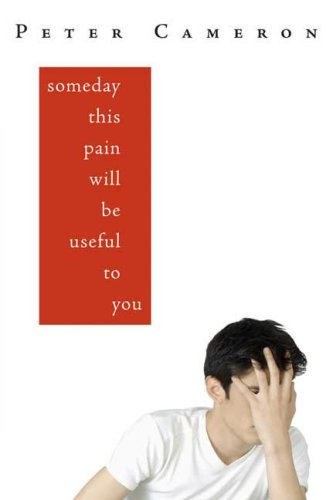 Someday This Pain Will Be Useful To You, by Peter Cameron, is the kind of book that I often don’t review because I can’t do it justice. I’ve skipped several of my favorite books over the last two years for this reason. But today, I’m taking a new approach and using a minimal description and some paragraphs from the book itself, and that’s going to have to do.
Someday This Pain Will Be Useful To You, by Peter Cameron, is the kind of book that I often don’t review because I can’t do it justice. I’ve skipped several of my favorite books over the last two years for this reason. But today, I’m taking a new approach and using a minimal description and some paragraphs from the book itself, and that’s going to have to do.James has been accepted by Brown University, but isn’t sure that he wants to go to college. He’d rather read to educate himself — maybe in a nice house in the Midwest — than spend time with his peers. For now, he works in a boring job at his mother’s art gallery in Manhattan and deals with his fractured family.
I have to say nothing much happens in this book. It’s all about self-discovery and coming of age. Even James’s attraction to his mother’s assistant John is restrained and ambivalent. But I think that the lack of huge external conflicts makes it feel more real and raw. The only flaw is that the book doesn’t leave you much to grasp onto when it’s over. It’s a little forgettable in a way. There are some really well-written passages that explain James’ feeling of isolation and loss. Here are three of them.
“No,” I said. “You’re right. It’s true.”The book isn’t all misery and angst. There’s humor, too. Overall, an interesting and entertaining book that will leave you wanting more — even if you can’t exactly remember why.
“What’s true?” my mother asked.
“I am disturbed,” I said. I thought about what the word meant, what it really means to be disturbed, like how a pond is disturbed when you throw a rock into it or how you disturb the peace. Or how you can be disturbed by a book or movie or the burning rain forest or the melting ice caps. Or the war in Iraq. It was one of those moments when you feel you have never heard the word before, and you cannot believe it means what it means, and you think how did this word come to mean that? It seemed like a bell or something, shining and pure, disturbed, disturbed, disturbed, I could hear it pealing with its true meaning, and I said, as if I had just realized it, “I am disturbed.”
...even if you had to sit at a table with someone, they didn’t expect you to say anything besides good morning, and that I could handle. I wish the whole day were like breakfast, when people are still connected to their dreams, focused inward, and not yet ready to engage with the world around them. I realized this is how I am all day; for me, unlike other people, there doesn’t come a moment after a cup of coffee or a shower or whatever when I suddenly feel alive and awake and connected to the world. If it were always breakfast, I would be fine.
[After telling his psychiatrist about a woman who had died on 9/11 and that no one knew she was dead for a while.]
I knew she knew why I was thinking about that woman — I was thinking about my own tendencies toward aloneness and I thought I could end up like that woman... but alone with a life that didn’t touch or overlap with anyone else’s, a sort of hermetically sealed life. I knew Dr. Adler knew I thought this and just wanted me to say it to express myself, because she thought that by articulating those thoughts I might transcend or purge myself of them — but what she didn’t know was that the story of the woman who disappeared like that didn’t make me sad, I didn’t think it was tragic that she left the world without effect. I thought it was beautiful. To die like that, to disappear without a trace, to sink without disturbing the surface of the water, not even a telltale bubble rising to the surface, like sneaking out of a party so no one notices you’re gone.
Posted by
MotherReader
at
10:16 AM
Whatever whoever chooses to read is their business, of course, but adults whose taste in recreational reading ends with the YA novel need to grow up.Words of wisdom from Roger Sutton, editor in chief of The Horn Book, a literary magazine about books for children and young adults.
The best response in my book?
I’m rubberActually, Liz over at Tea Cozy makes a very good and suitably outraged argument on her blog, but it was that part that stuck out for me, because the original statement is so ridiculous — and in so many ways — that it needed a silly response.
You’re glue
Whatever you say bounces off of me
And sticks to you!
There’s the hypocrisy of the editor of a magazine about children’s literature blasting an entire audience of that magazine. There’s the absurdity of being judged not only by what you’re reading but why you’re reading it. There’s the stupidity of saying that what people choose to “read is their business,” but then making a judgment anyway.
My personal favorite part of the sentence is the phrase “recreational reading.” Apparently, it’s okay to read kids’ lit if it’s part of your job, but not if it’s your fun reading. Only someone with the luxury of reading books at work could make that statement and not realize how inane it is. Librarians, teachers, and booksellers don’t get time on the job to read the books they are expected to know and recommend. They read them at home on their own time, and the line between recreational reading and professional reading blurs, because it has to. After working and the after-hours reading and — hello — having a life, there isn’t necessarily time fit in adult books too.
In the comments of the original post, Roger tries to squirm out of his original assertion by saying that it’s really the people who are smug about only reading children’s books that need to grow up. But that only comes into play at about comment forty-six. I guess by then he was choking on the taste of shoe leather. For me, I only have one more thing to say about the whole thing...
Like, what-evah.
Posted by
MotherReader
at
9:11 AM
I was searching over at the Poetry Foundation website for a poem about being overwhelmed, because I’m coming out of another long stress cycle. Nothing is gravely wrong in my household, please understand, but the little things add up. Running a major Girl Scout event. Calling Mom daily about her health issues. Preparing the girls for a talent show. Deciding on the future of my career path. Debating my purpose here on earth. You know, the little stuff.
In any case, the major GS event is done, and we did a fantastic job. My mom’s struggle with a stubborn infection seems to be at an end. My girls did a wonderful job in the talent show. I’ve made a decision to stay in my job, but to move to fewer hours and a closer branch when/if the opportunity presents itself, allowing me more time to write. Still working on the purpose-here-on-earth thing, but I’ll let you know.
Back on track — this article came up when I searched the word stressed. Since it isn’t about emotional stress, I suppose there is something about stressed syllables somewhere in the piece. Close enough. It’s a great article for Poetry Friday. Enjoy.
In any case, the major GS event is done, and we did a fantastic job. My mom’s struggle with a stubborn infection seems to be at an end. My girls did a wonderful job in the talent show. I’ve made a decision to stay in my job, but to move to fewer hours and a closer branch when/if the opportunity presents itself, allowing me more time to write. Still working on the purpose-here-on-earth thing, but I’ll let you know.
Back on track — this article came up when I searched the word stressed. Since it isn’t about emotional stress, I suppose there is something about stressed syllables somewhere in the piece. Close enough. It’s a great article for Poetry Friday. Enjoy.
Read the rest of the article at the Poetry Foundation. Poetry Friday round-up is over at The Simple and the Ordinary.How To (and How Not To) Write Poetry
Advice for blocked writers and aspiring poets from a Nobel Prize winner’s newspaper column.
by Wislawa Szymborska
The following are selections from columns originally published in the Polish newspaper Literary Life. In these columns, famed poet Wislawa Szymborska answered letters from ordinary people who wanted to write poetry. Translated by Clare Cavanagh, they appeared in slightly different form in our Journals section earlier this year.
To Heliodor from Przemysl: “You write, ‘I know my poems have many faults, but so what, I’m not going to stop and fix them.’ And why is that, oh Heliodor? Perhaps because you hold poetry so sacred? Or maybe you consider it insignificant? Both ways of treating poetry are mistaken, and what’s worse, they free the novice poet from the necessity of working on his verses. It’s pleasant and rewarding to tell our acquaintances that the bardic spirit seized us on Friday at 2:45 p.m. and began whispering mysterious secrets in our ear with such ardor that we scarcely had time to take them down. But at home, behind closed doors, they assiduously corrected, crossed out, and revised those otherworldly utterances. Spirits are fine and dandy, but even poetry has its prosaic side.”
Posted by
MotherReader
at
9:14 AM
Three recent — and good — picture book additions in my fair library. I’m thinking of making the “Thursday Three” a new thing for this blog, since I have a steady supply of these mini-reviews for picture books. We’ll see.
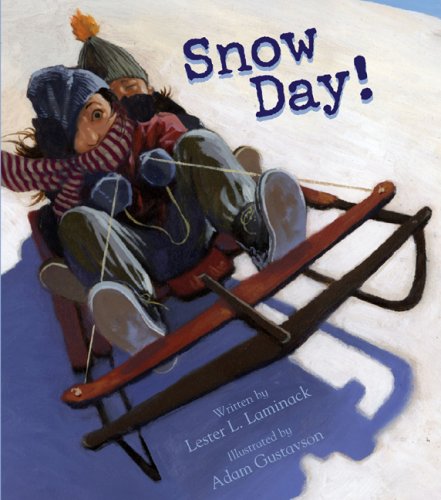 Snow Day! by Lester L. Laminack, illustrated by Adam Gustavson
Snow Day! by Lester L. Laminack, illustrated by Adam Gustavson
“Did you hear that? Did the weatherman just say what I thought he did? Did he say... SNOW? Oh please, let it snow. Lots and lots of snow.” This person is ready for a snow day and all the things that go along with it. No alarm clock. Staying in PJs. Playing outside. A day to watch TV and read a new book. To sled and throw snowballs. The special fun in this book is the surprise that I won’t spoil, and the fun illustrations that bring the reader into the imagining of the perfect snow day. Great book. (Here we got ice days, but no snow days, so I’m feeling particularly warm and fuzzy about this title.)
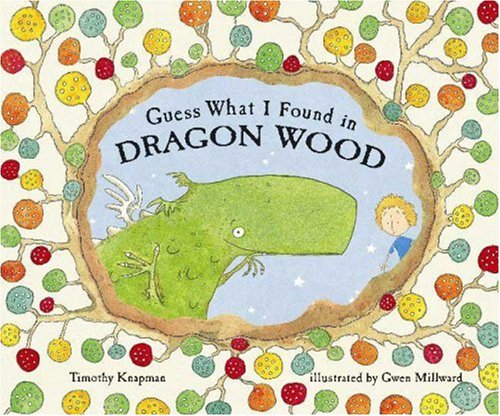 Guess What I Found in Dragon Wood, by Timothy Knapman, illustrated by Gwen Millward
Guess What I Found in Dragon Wood, by Timothy Knapman, illustrated by Gwen Millward
The surprise in this book is revealed on the second real page, so I don’t feel bad giving it away. It’s the dragon who finds a boy — or a Benjamin, as he calls it. The little dragon shows the Benjamin to his parents, and they feed him and put him to bed. The next day he goes to school, but he doesn’t want to sit on a volcano like the dragons are learning to do. In fact, he’s sad and... leaking. He misses his home, so his new dragon friend takes him back there. It’s not that the idea of mixing the point of view is brand new, but it is new enough and it’s usually fun, and it’s especially fun this time. Wonderful and imaginative illustrations. Another book winner.
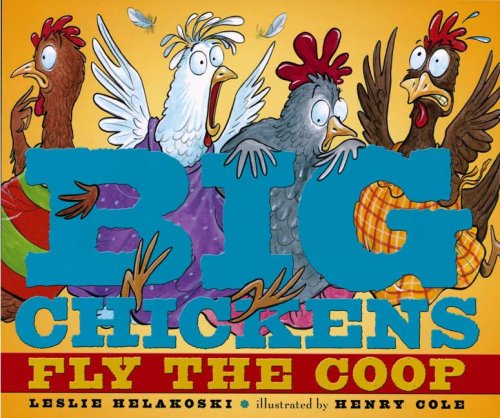 Big Chickens Fly the Coop, by Leslie Helakoski, illustrated by Henry Cole
Big Chickens Fly the Coop, by Leslie Helakoski, illustrated by Henry Cole
It’s hard to go wrong with a chicken book. Chickens are funny. In this story, four big chickens are ready for a change from the nice safe coop. They decide to go to the farmhouse to look for bugs there. As they make their way along, they keep running into places that they think are the farmhouse and are most definitely are not the farmhouse and are indeed Trouble with a capital T. Henry Cole’s illustrations add to the hilarity of the chickens running into a dog, a tractor, and horses. You’ve never seen a batch of funnier expressions on chickens, I’ll tell you that. It would be a great read-aloud as well as a giggly book to share one on one.
 Snow Day! by Lester L. Laminack, illustrated by Adam Gustavson
Snow Day! by Lester L. Laminack, illustrated by Adam Gustavson“Did you hear that? Did the weatherman just say what I thought he did? Did he say... SNOW? Oh please, let it snow. Lots and lots of snow.” This person is ready for a snow day and all the things that go along with it. No alarm clock. Staying in PJs. Playing outside. A day to watch TV and read a new book. To sled and throw snowballs. The special fun in this book is the surprise that I won’t spoil, and the fun illustrations that bring the reader into the imagining of the perfect snow day. Great book. (Here we got ice days, but no snow days, so I’m feeling particularly warm and fuzzy about this title.)
 Guess What I Found in Dragon Wood, by Timothy Knapman, illustrated by Gwen Millward
Guess What I Found in Dragon Wood, by Timothy Knapman, illustrated by Gwen MillwardThe surprise in this book is revealed on the second real page, so I don’t feel bad giving it away. It’s the dragon who finds a boy — or a Benjamin, as he calls it. The little dragon shows the Benjamin to his parents, and they feed him and put him to bed. The next day he goes to school, but he doesn’t want to sit on a volcano like the dragons are learning to do. In fact, he’s sad and... leaking. He misses his home, so his new dragon friend takes him back there. It’s not that the idea of mixing the point of view is brand new, but it is new enough and it’s usually fun, and it’s especially fun this time. Wonderful and imaginative illustrations. Another book winner.
 Big Chickens Fly the Coop, by Leslie Helakoski, illustrated by Henry Cole
Big Chickens Fly the Coop, by Leslie Helakoski, illustrated by Henry ColeIt’s hard to go wrong with a chicken book. Chickens are funny. In this story, four big chickens are ready for a change from the nice safe coop. They decide to go to the farmhouse to look for bugs there. As they make their way along, they keep running into places that they think are the farmhouse and are most definitely are not the farmhouse and are indeed Trouble with a capital T. Henry Cole’s illustrations add to the hilarity of the chickens running into a dog, a tractor, and horses. You’ve never seen a batch of funnier expressions on chickens, I’ll tell you that. It would be a great read-aloud as well as a giggly book to share one on one.
Posted by
MotherReader
at
9:47 AM
 Carpe Diem. Do people still think of the movie Dead Poets Society when they hear that phrase? Maybe it’s just me because my cousin was in the movie. (“Who?” you ask. The kid who killed himself.) When I saw the book Carpe Diem, by Autumn Cornell, the movie was the first thing I thought of, and it intruded on my book-reading experience.
Carpe Diem. Do people still think of the movie Dead Poets Society when they hear that phrase? Maybe it’s just me because my cousin was in the movie. (“Who?” you ask. The kid who killed himself.) When I saw the book Carpe Diem, by Autumn Cornell, the movie was the first thing I thought of, and it intruded on my book-reading experience. Vassar has been working since birth on her life plan, which includes Vassar (naturally), a Ph.D., a Pulitizer, and then more. Her parents believe in planning, planning, planning, and so does Vassar. But when her artistic, hippie grandmother sends her a present of tickets to travel around Malaysia, Cambodia, and Laos — and then blackmails her parents into making Vassar go — Vassar finds an entire world that she’s not prepared for. She has a family secret to discover, a guy, adventures, and danger. She deals with oversized poisonous centipedes and opium den thugs. Priceless treasures and squatting toilets.
I liked the book for the most part, though I thought that the characters were exaggerated. The mom’s looking over Vassar’s life goals and saying, “After the Pulitzer, then what? Think big, Vassar.” The dad’s taking over his own parenting — including hiring the household help — at age six. Vassar’s ten huge trunks sent overseas with her. The Grandmother’s hippie, flaky style. It was a little distracting for me.
Also, for some reason, I thought this book was going to have a different tone than it turned out to have. Maybe it was the cover, maybe something I read... I don’t know, but I expected more of a serious book than I got. Along with the DPS thing, it made it hard for me to let go and enjoy the ride of the story. However, if you are ready to look at the book as a fish-out-of-water story, with lots of outlandish moments, then it can be a fun read. You’ll get a little bit of culture exposure, but that’s certainly not the point of the book. It’s all about, yes, seizing the day. Making your life extraordinary.
Posted by
MotherReader
at
10:40 AM
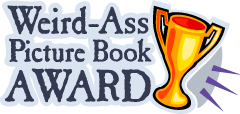 Wow. There’s an excitement in the air in anticipation of the Weird-Ass Picture Books Awards for 2008. Well, I can feel it and I’m all a-tingle. No, hold it. That’s my cell phone.
Wow. There’s an excitement in the air in anticipation of the Weird-Ass Picture Books Awards for 2008. Well, I can feel it and I’m all a-tingle. No, hold it. That’s my cell phone. It’s important to note that the designation of “weird-ass” is not necessarily a bad thing. Some books in their very strangeness reach new heights of art and storytelling. I’d like to think that this year’s winners have given us something to think about — or at the very least, made us go, “Hmmmm.” Here are the winners.
 The WAPB Award for Cover Art goes to:
The WAPB Award for Cover Art goes to:New Socks, by Bob Shea
In the words of Fuse#8, “This may well be the very first hipster picture book I’ve encountered, published in the last five years.” In my words, “How funky is your chicken?”
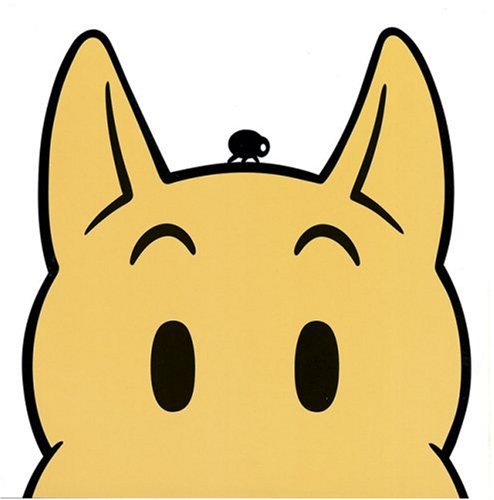 The WAPB Award for Illustration goes to:
The WAPB Award for Illustration goes to:Bow Wow Bugs a Bug, by Mark Newgarden and Megan Montague Cash
This wordless book starts off pretty normal, with a dog tracking a bug. Things get stranger as two dogs with two bugs meet and greet as dogs usually do, to put it gently. Then it gets stranger and stranger and stranger. Lots of fun, but totally weird.
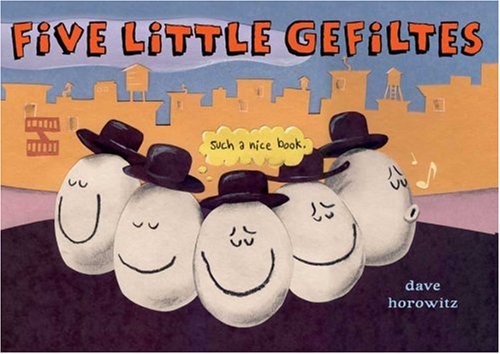 The WAPB Award for Story goes to:
The WAPB Award for Story goes to: Five Little Gefiltes, by Dave Horowitz
Taking the format of Five Little Ducks, Horowitz uses gefiltes instead to positively wacky effect, using lots of Yiddish colloquialisms. I’m not sure this book will play in Peoria, but it will have fans in Brooklyn. Oy vey!
 And the 2008 Award for Best Weird-Ass Picture Book goes to:
And the 2008 Award for Best Weird-Ass Picture Book goes to: Cowboy and Octopus, by Jon Scieszka, illustrated by Lane Smith
To address the intrinsic weirdness of this book, you need go no further than the title Cowboy and Octopus. This surreal pairing of friends leads to a truly strange book in story and illustrations, making it a masterpiece even in the world of WAPB. Bravo!
Congratulations to all our winners.
While The Alphabet from A to Y With Bonus Letter Z! written by Steve Martin and illustrated by Roz Chast, was nominated and considered, ultimately it was rejected by the committee (uh, me) as being an adult book in children’s picture book clothing, and therefore ineligible for the award. Plus it sucked.
The Boy With Two Belly Buttons, by Stephen Dubner, illustrated by Christoph Niemann, was also considered for storyline, but as it turns out the book is just bad, not weird. What luck, though, that it can be viewed in its entirety at Amazon. If I’d had to leave my computer to assess the book, I’d have been ticked off.
Thanks for being part of the 2008 WAPBAs. Start looking for contenders for next year. I’ve already seen two possible nominees and it’s barely March, so it could be a stellar year for the strange. Let’s say, for the wonderfully strange.

















